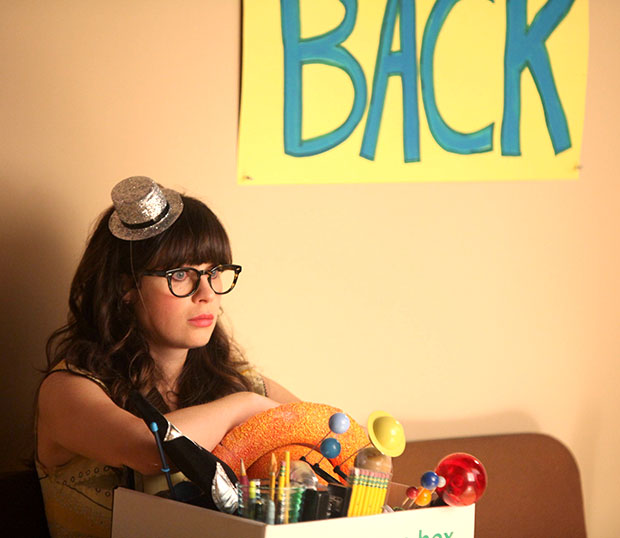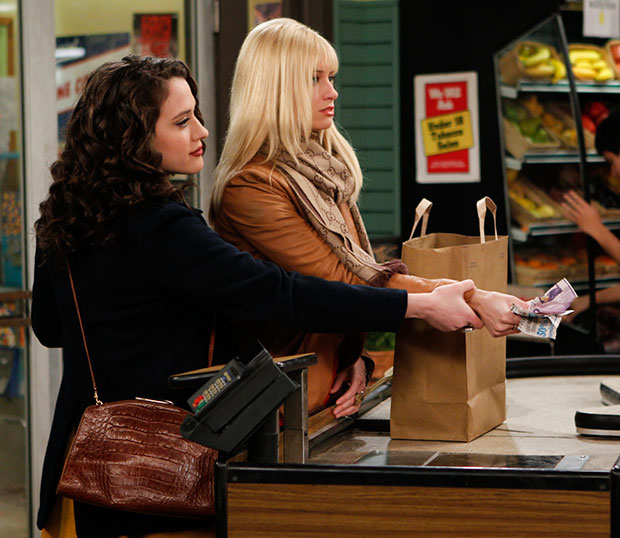
The single girl is by no means the new girl in town. In fact, as a culture, we’re kind of obsessed with her.
She’s been the subject of chatter throughout 2011 and 2012. Women’s magazines have catered to the single girl by creating lists of cities most likely to end her unaccompanied plight or techniques for keeping a boyfriend. When that didn’t stick and the collective started to realize “Single Girl” wasn’t an affliction to be cured, but rather a state of being to be acknowledged, we switched to praising her for her strength and for changing the makeup of the single man and traditional relationships, like in Kate Bolick’s 2011 Atlantic cover story. The U.S. Census bureau reported that a record 17.8 million women were living on their own in 2011, bringing some much needed numerical support to this supposed phenomenon. Plus, women’s health issues were some of the most hotly debated topics in the 2012 presidential election. But throughout all of this, we’re often talking about the upper echelon of single-ladydom – the benefits of being on one’s own, kicking ass and taking names in what used to be a “man’s world,” so to speak. But in 2012, the topic of the single girl reached new levels of legitimacy, especially on television.
The exalted (and equally despised, as Fox News recently reminded us) Single Girl of cultural note gained layers and stages within her seemingly one-note solo path. The most notable layer being that of the Poor, Single Girl life stage.
Series like HBO’s Girls, CBS’ 2 Broke Girls, Fox’s New Girl, and even reality shows like Bravo’s Gallery Girls bring the plight of the broke girl into homes across the country. (In its heyday, Sex and the City may have been all about the single girl, but certainly never the financially strapped one.) It brings into relief the fact that women exist in this space where our hair isn’t always perfect. Our makeup doesn’t look like it does in the movies. Our socks don’t always match and sometimes we struggle to pay the gas bill. It’s not just a punchline and it doesn’t make us deadbeats or outliers, it’s simply a life stage. Bringing that fact into the stark light of television for the masses brings an air of legitimacy to what is very much a reality for many girls in the no-man’s land between college and middle age.
When it comes in the form of Zooey Deschanel’s doe-eyed New Girl, the pop culture advent isn’t universally embraced. The polka-dot-loving, grade-school-sing-a-long, Christmas-morning-pajama-loving girl becomes a beacon of infantilism. In fact, Deschanel’s on-screen and off-screen personas are to blame for the notion “that it’s never been easier, more fun or more acceptable to remain locked in the warm, comfy embrace of childhood,” according to a Jezebel post by Girls writer Deborah Schoeneman.
PHOTOS: Zooey Deschanel Fashion Flipbook
But in Season 2 of the Fox series, Deschanel’s Jess added another characteristic to her former Manic Pixie Dream girl: a lack of cash flow. Jess lost her job, and with it, her schoolgirl antics. She became a penniless weirdo struggling to find a sliver of happiness in a reality that just handed her a fresh dose of harsh reality. This manifested itself in Jess’ multi-episode quest to displace her unhappiness by finding an emotion-free sex-friend set-up with a Creed fan, which took over and let the foundation of the problem take a back seat until Episode 7, when Jess’ financial constraints finally caught up to her. Schmidt cut off the gas to the apartment and Jess finally had to face the music and get a job that probably wasn’t going to pay her big bucks so she could suffer along with the rest of us.
Of course Girls has been throwing down the broke lady gauntlet since day one. Lena Dunham’s Hannah is cut off by her parents, sending her on a journey through awful job interviews, thankless jobs, unpaid internships, and uncomfortable discussions about where she’s going to get money for her next rent payment. The series brings into focus a range of circumstances that might befall a single, broke girl living in Brooklyn, and the diverting and rarely blissful moments that help to distract from the truth of her precarious lifestyle. It’s cathartic for those living the awful (and sometimes awesome) truth, and comprehensive enough to allow for audiences at different life stages to embrace the reality they may not know themselves.
PHOTOS: Girls‘ Hannah and Adam, Plus 11 Other Hot and Horrifying Sex Scenes
 But the broke girl isn’t a phenomenon pegged to the folks willing to shell out 15 bucks a month for HBO or risk the virus-ridden expanse of pirated Internet television. Even sweeping, broadcast audiences get a watered-down, broad stroke version of the broke girl thanks to Whitney Cummings‘ 2 Broke Girls sitcom. However, Max and Caroline get a punchline-chasing raw deal. It’s one thing to be broke and scraping by, allowing oneself to be tempted by the evil incarnate that is a pre-approved credit card, it’s quite another to dine out at a soup kitchen to save some dough. However, CBS’ broke girls have done both in Season 2 of the hit series. But broad strokes or not, the series is bringing the plight of the poor girl into the larger pop culture consuming consciousness.
But the broke girl isn’t a phenomenon pegged to the folks willing to shell out 15 bucks a month for HBO or risk the virus-ridden expanse of pirated Internet television. Even sweeping, broadcast audiences get a watered-down, broad stroke version of the broke girl thanks to Whitney Cummings‘ 2 Broke Girls sitcom. However, Max and Caroline get a punchline-chasing raw deal. It’s one thing to be broke and scraping by, allowing oneself to be tempted by the evil incarnate that is a pre-approved credit card, it’s quite another to dine out at a soup kitchen to save some dough. However, CBS’ broke girls have done both in Season 2 of the hit series. But broad strokes or not, the series is bringing the plight of the poor girl into the larger pop culture consuming consciousness.
Of course, the true mark of the poor girl as a trend is that she’s even infiltrated the realm of reality television. It’s a place that generally embraces personalities in three distinct categories: the rich and/or famous, the ridiculous and wacky, or the suckers competing for some overblown prize. Gallery Girls is admittedly a subject for hate-watching, but its content raised a question about this “poor girl” trend. Could it be a real movement in television?
Yes, it could. Not everyone in Bravo’s set of art-world ladies treads the broke girl line, but for the most part, finance as a struggle is a recurring theme for the series. Freelance photographer Angela Pham has to supplement her sporadic income with a waitressing job and modeling jobs here and there. Gallery owners Chantal Chadwick and Claudia Martinez Reardon struggle to pay the bills for their business and Reardon frets about making good on a business loan from her parents. Kerri Lisa works two full-time jobs in order to pursue her art world dreams… and keep her dream apartment in the West Village. By most stretches of the imagination, these reality starlets aren’t exactly the picture of the broke girl that we’ve come to expect (how many struggling ladies can drape themselves in such luxurious couture?), but the way in which their struggles are picked out and emphasized in the editing room before the episodes hit the television is an indication of the stories audiences are seeking.
It’s not enough for a post-graduate girl to be fun and fancy-free, wearing high-wasted pinstripe skirts and twirling her hair. That’s not what a “girl” is anymore. In 2012, the definition in popular culture evolved and diversified. Girls, in the non-pig-tail-appropriate sense of the word, became pre-adults, with all the faculties of a full-fledged grownup, but none of the practical experience. She’s a gawky fawn, learning to stand on her own two feet. Every once in a while, she won’t have enough dough for the electricity bill. She’ll hoof it home to mom and dad to get a short-term loan to stay afloat. She’ll accept a series of odd jobs to stay in the black. But all the while she’s growing; she’s working toward something other than a big, handsome man to hold her hand. Television series like Girls and New Girl have taken even the most adorable little lady off her pedestal, bringing her down to the level at which we feel free to explore, dissect, judge, and be entertained by her journey to full-on adulthood.
It’s a product of a changing environment – Pew Research reports that the number of nuptials has decreased by 29 percent since 1960, the average marrying age has risen from early 20s to 26.5 for women, and since the early ‘90s U.S. Census data has shown that there are more women than men attending college. That girl isn’t an anomaly and she isn’t hiding. She’s sitting next to you on the subway. She’s unavoidable. But the shift is also a product of acknowledgement. Every time audiences tune into one of these shows touting a broke girl heroine, they’re buying in. They’re accepting this financially-challenged, almost-adult. She’s not a stoned slacker or lost little lady. She’s a human, dealing with the struggles of early adulthood and she’s getting there.
Follow Kelsea on Twitter @KelseaStahler
[Photo Credit: Patrick McElhenney/FOX; Cliff Lipson/CBS]
More:
Does Fox’s Lady Night Have a Lady Problem?
What Louis C.K. Said to Lena Dunham at the Emmys
Lena Dunham is Writing a Book, Vying to Be ‘A Voice of a Generation’
Chris Brown Makes NSFW Poop-Related Insults, Deletes Twitter Account





 ’Liz & Dick’ Is Bad in the Worst Possible Way: Review
’Liz & Dick’ Is Bad in the Worst Possible Way: Review